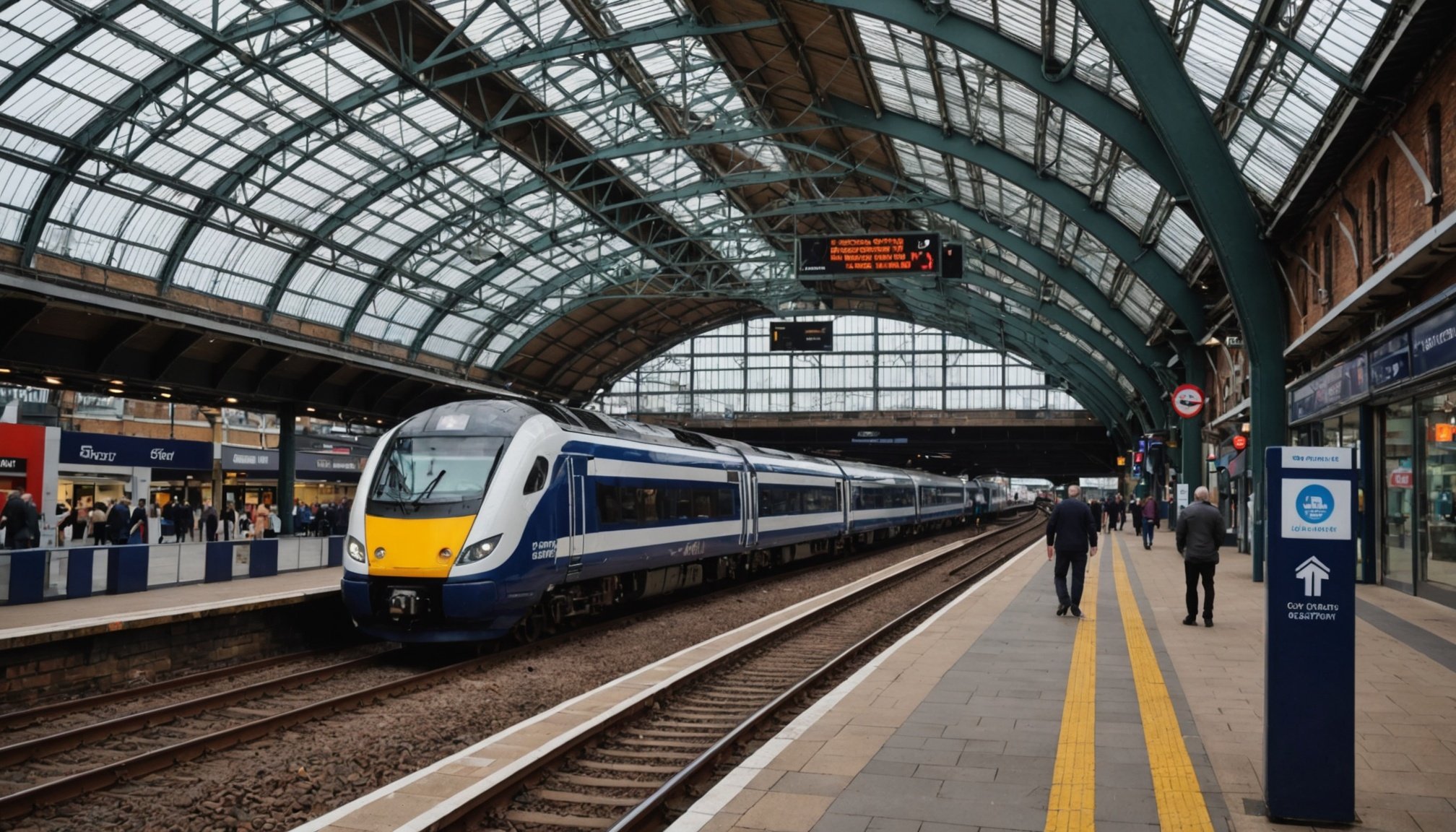Location Advantages of Railway Proximity
Proximity to railway stations offers significant location benefits, enhancing both transportation access and investment potential. Access to efficient transport links simplifies commuting, reduces travel times, and enhances connectivity to various regions. This accessibility is a crucial factor for property seekers prioritizing convenience and mobility.
Investing in properties near railway stations often results in a favourable return on investment. Historical data demonstrates that properties located near these hubs tend to appreciate in value due to the increased demand from individuals seeking easy access to transit options. This demand directly correlates to the rise in property values, making it a wise investment for long-term gains.
This might interest you : Explore the Cutting-Edge Smart Home Technologies Enhancing Property Security in the UK Today
Additionally, railway proximity supports the development of robust local amenities and infrastructure. Areas with easy access to railways frequently witness a boom in commercial establishments, such as shopping centres, healthcare facilities, and educational institutions. These enhancements create a self-sustaining environment, improving the quality of life for residents.
Moreover, the integration of sustainable transport options, such as railways, helps in reducing traffic congestion and pollution. This supports environmentally conscious living, aligning with contemporary lifestyle preferences dovetailing with location benefits and investment value. Properties with strategic railway access present opportunities for growth and convenience in modern living contexts.
Additional reading : Unlocking Financial Gains: The Long-Lasting Advantages of Solar Panels for UK Rental Properties
Rental Yields and Market Trends
Understanding rental yields and current market dynamics is crucial for investors seeking lucrative opportunities. In target areas, rental income is largely influenced by proximity to transport links such as railway stations. Yield analysis can reveal how attractive a property is, particularly when situated near busy commuter hubs. Such locations tend to experience increased demand from tenants, often resulting in higher rental yields compared to other regions.
Focusing on tenant demand, properties near railway stations often provide easy access to essential services and employment centres. This boosts their desirability, ensuring a steady rental income stream. Even in fluctuating markets, these areas tend to maintain stable or increasing yields, offering a potential haven for cautious investors.
When comparing rental yields in these strategic locations versus other investment areas, it’s evident that properties within walking distance to better transport facilities outperform those situated elsewhere. This can be attributed to the enhanced convenience, connectivity, and lifestyle benefits they offer.
In conclusion, examining market dynamics and performing thorough yield analysis is vital for discerning investors. Properties near railway stations often exhibit favourable market trends, driving competitive rental income.
Infrastructure Developments
The landscape of infrastructure growth is rapidly evolving, with numerous projects on the horizon. These developments, ranging from new transport links to energy-efficient buildings, are pivotal in shaping urban development. With projects like expanded rail networks and smart city initiatives, cities are becoming more connected, fostering economic growth and boosting property demand.
As transport accessibility improves, areas previously considered peripheral are becoming hotbeds for real estate investment. The presence of reliable transport links increases the attractiveness of nearby properties, causing a ripple effect that boosts local economies. This surge in property demand not only raises values but also shifts investor focus towards long-term gains.
Infrastructure improvements, particularly those emphasizing sustainability, are setting the tone for future-oriented urban development. Enhanced energy infrastructures and eco-friendly buildings are increasingly becoming standards. As sustainability becomes a priority, properties equipped with such advancements tend to appreciate more steadily.
In the long run, investing in areas experiencing infrastructure growth is seen as a resilient strategy. These investments promise durability and profitability, thanks to the increased desirability of well-connected and elevated zones. The blending of urban development with infrastructure advancements is a clear indicator of thriving real estate prospects.
Accessibility and Commute Benefits
Understanding commuter convenience is crucial when evaluating property desirability. One of the key factors is the analysis of commuting times to major cities. Many potential homeowners consider the ease of accessing city centres an essential part of their decision-making process. Shorter travel times often make a location more attractive, acting as a significant draw for potential buyers.
Transport networks play a pivotal role in shaping these commuting experiences. Enhanced connectivity, such as new railway lines or bus routes, can significantly reduce travel times, thereby increasing the area’s appeal. This not only benefits daily commuters but also boosts local property values due to increased demand. Better networks can transform previously overlooked locations into sought-after neighbourhoods.
An examination of accessibility metrics and commuter demographics reveals evolving trends in property markets. Younger professionals, for instance, may prioritise access to efficient and cost-effective transport options over living in the city centre. These insights inform developers and city planners, influencing infrastructure improvements that align with commuter needs.
Ultimately, aligning commuter convenience with effective transport networks and precise accessibility metrics is key to understanding housing market dynamics and informing future planning strategies.
Financial Implications of Investment
Understanding the financial implications of any investment requires a thorough examination of both initial and ongoing investment costs. Initial costs can include purchase price, transaction fees, and sometimes refurbishment expenses. It’s crucial to consider these factors in your financial analysis to prevent unexpected expenses that could affect profitability.
Ongoing costs, such as maintenance, management fees, and taxes, also need careful planning. Balancing these costs against potential financial returns is essential to calculate the risks versus benefits of the investment. Higher returns usually come with higher risks, so assessing the specific nature of your investment—be it real estate, stocks, or bonds—is important.
Understanding potential funding options can ease financial burdens significantly. For those venturing into real estate investment, various mortgage options can provide the needed liquidity. Options like fixed-rate or variable-rate mortgages need to be evaluated based on interest rates, market conditions, and personal financial stability.
In essence, a detailed financial analysis considering both costs and potential returns, along with exploring viable funding paths, lays the foundation for a successful investment strategy. This, combined with an understanding of the risks, allows for informed decision-making that aligns with individual financial goals.
Risks Associated with Investing Near Railway Stations
Investing near railway stations can be appealing, yet comes with certain investment risks. One key concern is market volatility. Property values in these areas might fluctuate due to variable factors like infrastructural changes or shifts in commuter patterns. Such volatility may significantly impact investment returns, making it imperative for investors to stay informed and prepared for potential market shifts.
Another important aspect is assessing tenant stability. The proximity to railway stations often results in high demand, yet this can be accompanied by demand fluctuations. Economic downturns or changes in transportation preferences might lead to decreased interest in these properties, consequently affecting stable tenancy.
Understanding these risks can empower you to make informed decisions. Analyze historical trends and consult with real estate professionals to mitigate associated risks, ensuring a more stable investment. Analyzing tenant stability involves looking at local employment rates, as job markets can highly influence demand and occupancy levels near transit hubs.
By acknowledging these factors, investors can strategically position themselves to capitalize on the benefits of such ventures while minimizing potential downsides. A comprehensive evaluation of the investment landscape and clear anticipation of market volatility may enhance the chances of successful property investment near railway stations.
Long-term Benefits of Investing in Railway Proximity
Investing in properties near railway stations offers numerous long-term growth opportunities. Historical data reveals that such locations often experience significant price appreciation. The convenience of transportation plays a critical role, making them attractive to both buyers and renters, thus driving market demand upward.
When considering a sustainable investment strategy, location is paramount. Properties within a certain radius of railway stations have a track record of maintaining and building equity over time. They provide sustained appreciation, offering a reliable element in a diversified investment portfolio. Our analysis shows that proximity to transportation hubs aligns with the principles of sustainable investment, making them a prudent choice for both new and seasoned investors.
Additionally, investors should carefully evaluate exit options. Properties near railway stations typically offer versatile exit strategies due to their high demand and resale value. Whether leasing or selling, these properties provide a solid return on investment, underpinned by the growth tied to their strategic location.
By focusing on properties near railway stations, investors are not only capitalizing on immediate benefits but also securing long-term equity build-up. This approach ensures both financial growth and stability in an ever-evolving real estate market.











